在前面几节,我给大家介绍了当一个系统拆分成微服务后,会产生的问题与解决方案:服务如何发现与管理(Nacos注册中心实战),服务与服务如何通信(Ribbon, Feign实战)
今天我们就来聊一聊另一个问题:客户端如何访问?
在单体架构时,我们的系统只有一个入口,前端人员调用起来十分的简单。
但是当我们拆分为一个微服务系统后,每个服务都有属于自己ip和端口号,我们不可能跟前端说:诶,调用这个接口的时候你就使用这个地址哈。
前端:

既然这样不行的话,那我们能不能利用已有的知识想一个解决方案呢?
不是真的能用的解决方案
其实我们很容易的就能想到,我们的服务是具备互相发现及通信的能力的,那么,我们是不是可以搞一个类似统一入口(网关)样的服务,前端只请求这个服务,由这个服务去调用真实服务的Feign接口。
举个例子:
- 商品服务的获取商品接口:localhost:8080/get/goods
- 订单服务的下订单接口:localhost:8081/order
现在有个网关服务, 里面有两个接口:localhost:5555/get/goods, localhost:5555/order
前端调用获取商品接口时,访问:localhost:5555/get/goods,然后网关服务调用商品服务的Feign接口
下单时:访问:localhost:5555/order,然后网关服务调用订单服务的Feign接口
小结一下:
这个方案是否解决了服务入口统一的问题:解决了
能用吗:能用,但不是完全能用
因为这样会有一个问题,服务写的每一个接口,都需要给出一个Feign接口,给我们的网关服务调用。
真正的解决方案
Spring Cloud为我们提供了一个解决方案:Spring Cloud Gateway
Spring Cloud Gateway提供了一个建立在Spring生态系统之上的API网关,能够简单而有效的方式来路由到API,并基于 Filter 的方式提供一些功能,如:安全、监控。
Spring Cloud Gateway是由Spring Boot 2.x、Spring WebFlux和Reactor实现的,需要Spring Boot和Spring Webflux提供的Netty运行环境。它不能在传统的Servlet容器中工作,也不能在以WAR形式构建时工作。
官方文档:https://docs.spring.io/spring-cloud-gateway/docs/current/reference/html/
概念
Route(路由):网关的基本构件,它由一个ID、一个目的地URI、一个断言集合和一个过滤器集合定义。如果集合断言为真,则路由被匹配。
Predicate(断言):Java 8断言函数。参数类型是Spring Framework ServerWebExchange。可以让开发者在HTTP请求中的任何内容上进行匹配,比如头文件或参数。
Filter(过滤):由特定的工厂构建的GatewayFilter的实例,与传统的Filter一样,能够请求前后对请求就行处理。
工作原理

客户端向Spring Cloud Gateway发出请求。如果Gateway处理程序映射确定一个请求与路由相匹配,它将被发送到Gateway Web处理程序。这个处理程序通过一个特定于该请求的过滤器链来运行该请求。
过滤器可以在代理请求发送之前和之后运行pre和post逻辑。
简单使用
准备
预先准备一个服务,用来测试路由
我这里准备了个一个商品服务,并提供了一个接口:http://localhost:8082/goods/get-goods

现在,开始编写网关服务
引入依赖
<dependency>
<groupId>org.springframework.cloud</groupId>
<artifactId>spring-cloud-starter-gateway</artifactId>
</dependency>
<dependency>
<groupId>com.alibaba.cloud</groupId>
<artifactId>spring-cloud-starter-alibaba-nacos-discovery</artifactId>
</dependency>
编写配置
bootstrap.yaml
server:
port: 5555
spring:
application:
name: my-gateway
cloud:
nacos:
discovery:
server-addr: 127.0.0.1:8848
namespace: public
username: nacos
password: nacos
logging:
level:
org.springframework.cloud.gateway: info
com.alibaba.nacos.client.naming: warn
application.yaml
spring:
cloud:
gateway:
# 路由配置
routes:
# 路由id, 保证唯一性
- id: my-goods
# 路由的地址,格式:协议://服务名 lb: load balance,my-goods: 商品服务名
uri: lb://my-goods
# 断言
predicates:
# 匹配goods开头的请求
- Path=/goods/**
启动类
package com.my.micro.service.gateway;
import org.springframework.boot.SpringApplication;
import org.springframework.boot.autoconfigure.SpringBootApplication;
/**
* @author Zijian Liao
* @since 1.0.0
*/
@SpringBootApplication
public class GatewayApplication {
public static void main(String[] args) {
SpringApplication.run(GatewayApplication.class, args);
}
}
测试
启动服务,并访问:http://localhost:5555/goods/get-goods
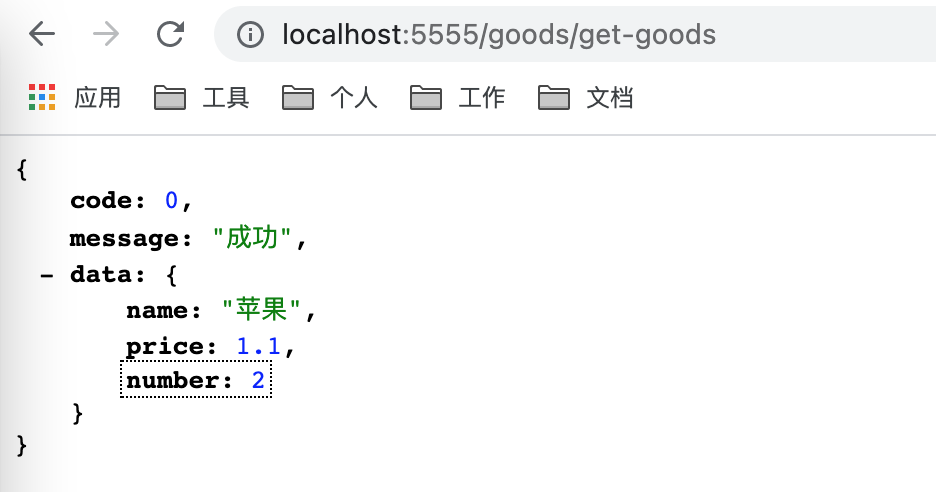
可以看到,服务成功被路由了
一个简单的网关服务就这样完成了,小伙伴看完过有没有对网关的概念更加深刻呢?
断言
在上面的例子中,我们就用到了一个断言工厂:Path
在Spring Cloud Gateway中,所有的断言工厂都是继承于AbstractRoutePredicateFactory, 并且命名规则为:XxxRoutePredicateFactory, 比如Path的类名为:PathRoutePredicateFactory
那么,Spring Cloud Gateway给我们内置了哪些断言工厂呢?
以下展示我觉得常用的断言工厂,更多的内容还请小伙伴自己查看文档
After
匹配在某个时间(ZonedDateTime)后的请求
spring:
cloud:
gateway:
# 路由配置
routes:
# 路由id, 保证唯一性
- id: my-goods
# 路由的地址,格式:协议://服务名 lb: load balance,my-goods: 商品服务名
uri: lb://my-goods
# 断言
predicates:
# 匹配goods开头的请求
- Path=/goods/**
# 匹配23:05分后的请求
- After=2021-08-08T23:05:13.605+08:00[Asia/Shanghai]
我们在23:03进行测试

访问失败了
Before
匹配在某个时间(ZonedDateTime)前的请求
与After相似,不再演示
Between
匹配在某个时间段(ZonedDateTime)的请求
spring:
cloud:
gateway:
# 路由配置
routes:
# 路由id, 保证唯一性
- id: my-goods
# 路由的地址,格式:协议://服务名 lb: load balance,my-goods: 商品服务名
uri: lb://my-goods
# 断言
predicates:
# 匹配goods开头的请求
- Path=/goods/**
# 匹配23:05-23:10的请求
- Between=2021-08-08T23:05:13.605+08:00[Asia/Shanghai],2021-08-08T23:10:13.605+08:00[Asia/Shanghai]
Host
匹配某个Host的请求
spring:
cloud:
gateway:
# 路由配置
routes:
# 路由id, 保证唯一性
- id: my-goods
# 路由的地址,格式:协议://服务名 lb: load balance,my-goods: 商品服务名
uri: lb://my-goods
# 断言
predicates:
# 匹配goods开头的请求
- Path=/goods/**
#配置host为192.168.1.105请求
- Host=192.168.1.105
注意,测试时需要将端口号改为80
尝试使用127.0.0.1发起调用
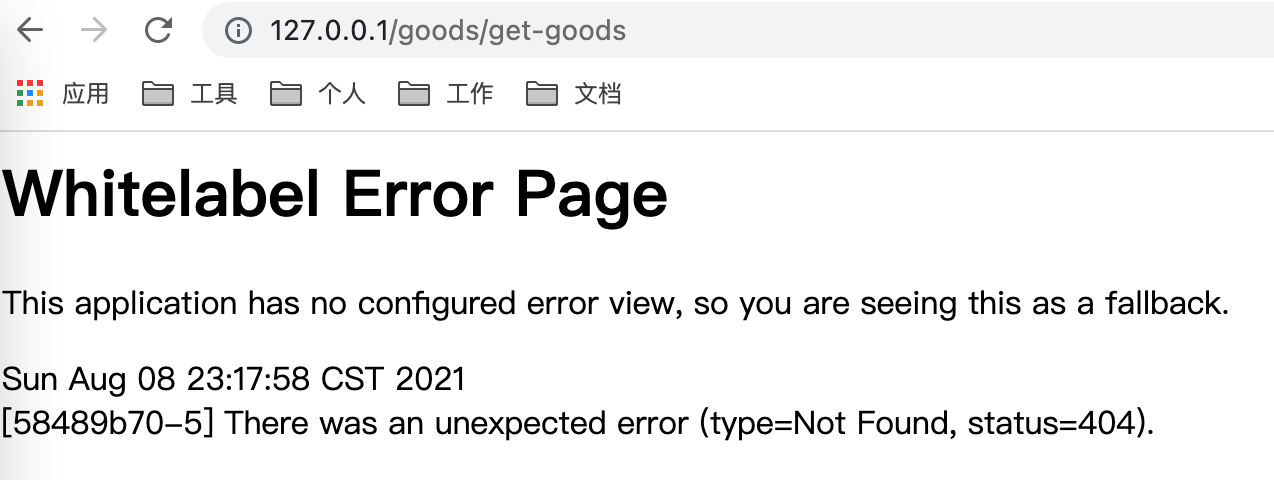
改为192.168.1.105进行调用
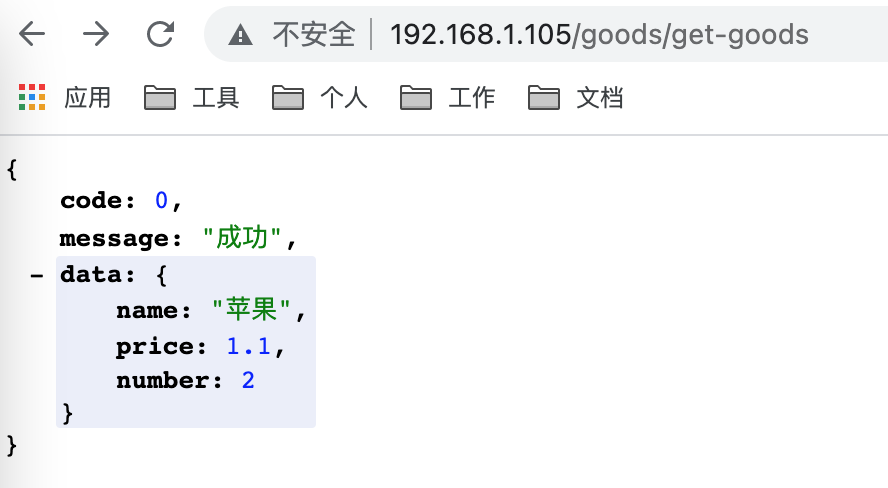
RemoteAddr
匹配指定的远程源地址
spring:
cloud:
gateway:
# 路由配置
routes:
# 路由id, 保证唯一性
- id: my-goods
# 路由的地址,格式:协议://服务名 lb: load balance,my-goods: 商品服务名
uri: lb://my-goods
# 断言
predicates:
# 匹配goods开头的请求
- Path=/goods/**
#配置RemoteAddr为192.168.1网段的地址
- RemoteAddr=192.168.1.1/24
测试

启用内网穿透测试
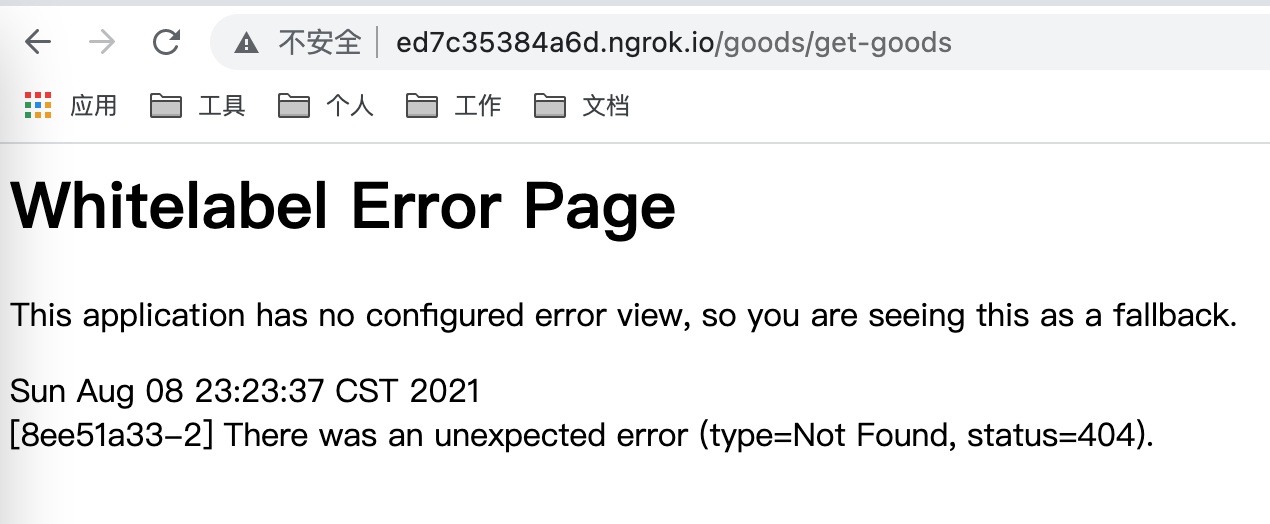
访问失败了
过滤器
关于过滤器这块我举个例子,更多的内容请小伙伴自己查阅文档
官方文档:https://docs.spring.io/spring-cloud-gateway/docs/current/reference/html/#gatewayfilter-factories
举一个用的比较多的过滤器:
StripPrefix
顾名思义,除去前缀的过滤器,将匹配的请求的前缀去除,将去除后的请求转发给下游服务
spring:
cloud:
gateway:
# 路由配置
routes:
# 路由id, 保证唯一性
- id: my-goods
# 路由的地址,格式:协议://服务名 lb: load balance,my-goods: 商品服务名
uri: lb://my-goods
# 断言
predicates:
# 匹配goods开头的请求
- Path=/api/goods/**
filters:
# 1表示去除一个前缀
- StripPrefix=1
组合来看,意思是当客户端发起请求:http://localhost:5555/api/goods/get-goods, 匹配该路由,然后将第一个前缀
api去除,然后转发给商品服务,转发的路径为:/goods/get-goods
测试
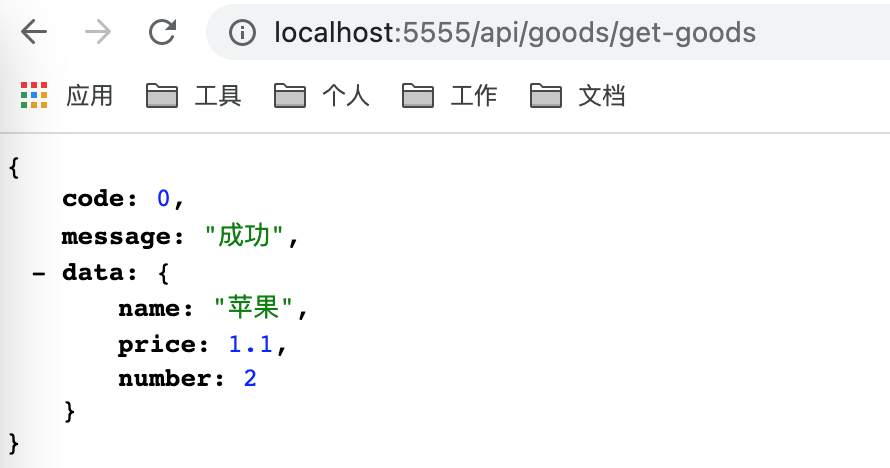
自定义断言工厂
上面提到过:所有的断言工厂都是继承于AbstractRoutePredicateFactory, 并且命名规则为:XxxRoutePredicateFactory, 比如Path的类名为:PathRoutePredicateFactory
我们现在就来尝试实现一个自定义的请求头断言工厂吧
编写代码
package com.my.micro.service.gateway.filter;
import org.springframework.cloud.gateway.handler.predicate.AbstractRoutePredicateFactory;
import org.springframework.cloud.gateway.handler.predicate.GatewayPredicate;
import org.springframework.stereotype.Component;
import org.springframework.web.server.ServerWebExchange;
import java.util.Arrays;
import java.util.Collections;
import java.util.List;
import java.util.function.Predicate;
/**
* @author Zijian Liao
* @since 1.0.0
*/
@Component
public class MyHeaderRoutePredicateFactory extends AbstractRoutePredicateFactory<MyHeaderRoutePredicateFactory.Config> {
/**
* Header key.
*/
public static final String HEADER_KEY = "header";
/**
* Regexp key.
*/
public static final String REGEXP_KEY = "regexp";
public MyHeaderRoutePredicateFactory() {
super(MyHeaderRoutePredicateFactory.Config.class);
}
@Override
public List<String> shortcutFieldOrder() {
return Arrays.asList(HEADER_KEY, REGEXP_KEY);
}
@Override
public Predicate<ServerWebExchange> apply(MyHeaderRoutePredicateFactory.Config config) {
return new GatewayPredicate() {
@Override
public boolean test(ServerWebExchange exchange) {
// 获取请求头
List<String> values = exchange.getRequest().getHeaders()
.getOrDefault(config.header, Collections.emptyList());
if (values.isEmpty()) {
return false;
}
// 判断请求头中的值是否与配置匹配
return values.stream()
.anyMatch(value -> value.matches(config.regexp));
}
@Override
public String toString() {
return String.format("Header: %s=%s ", config.header, config.regexp);
}
};
}
public static class Config {
private String header;
private String regexp;
public String getHeader() {
return header;
}
public void setHeader(String header) {
this.header = header;
}
public String getRegexp() {
return regexp;
}
public void setRegexp(String regexp) {
this.regexp = regexp;
}
}
}
编写配置
spring:
cloud:
gateway:
# 路由配置
routes:
# 路由id, 保证唯一性
- id: my-goods
# 路由的地址,格式:协议://服务名 lb: load balance,my-goods: 商品服务名
uri: lb://my-goods
# 断言
predicates:
# 匹配goods开头的请求
- Path=/api/goods/**
# 匹配header为name=aljian的请求
- MyHeader=name,ajian
filters:
# 1表示去除一个前缀
- StripPrefix=1
测试
直接在浏览器中访问
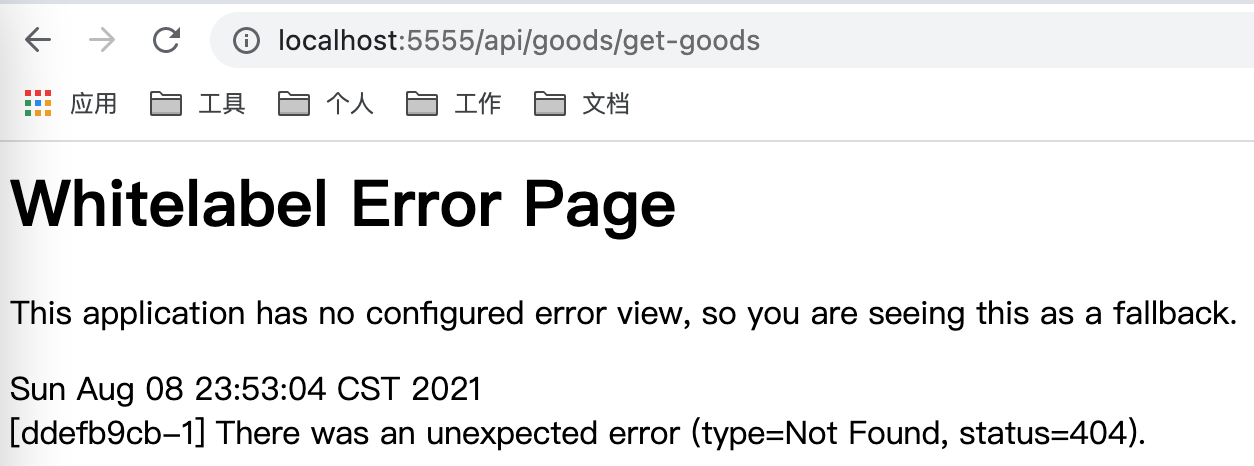
改用postman访问
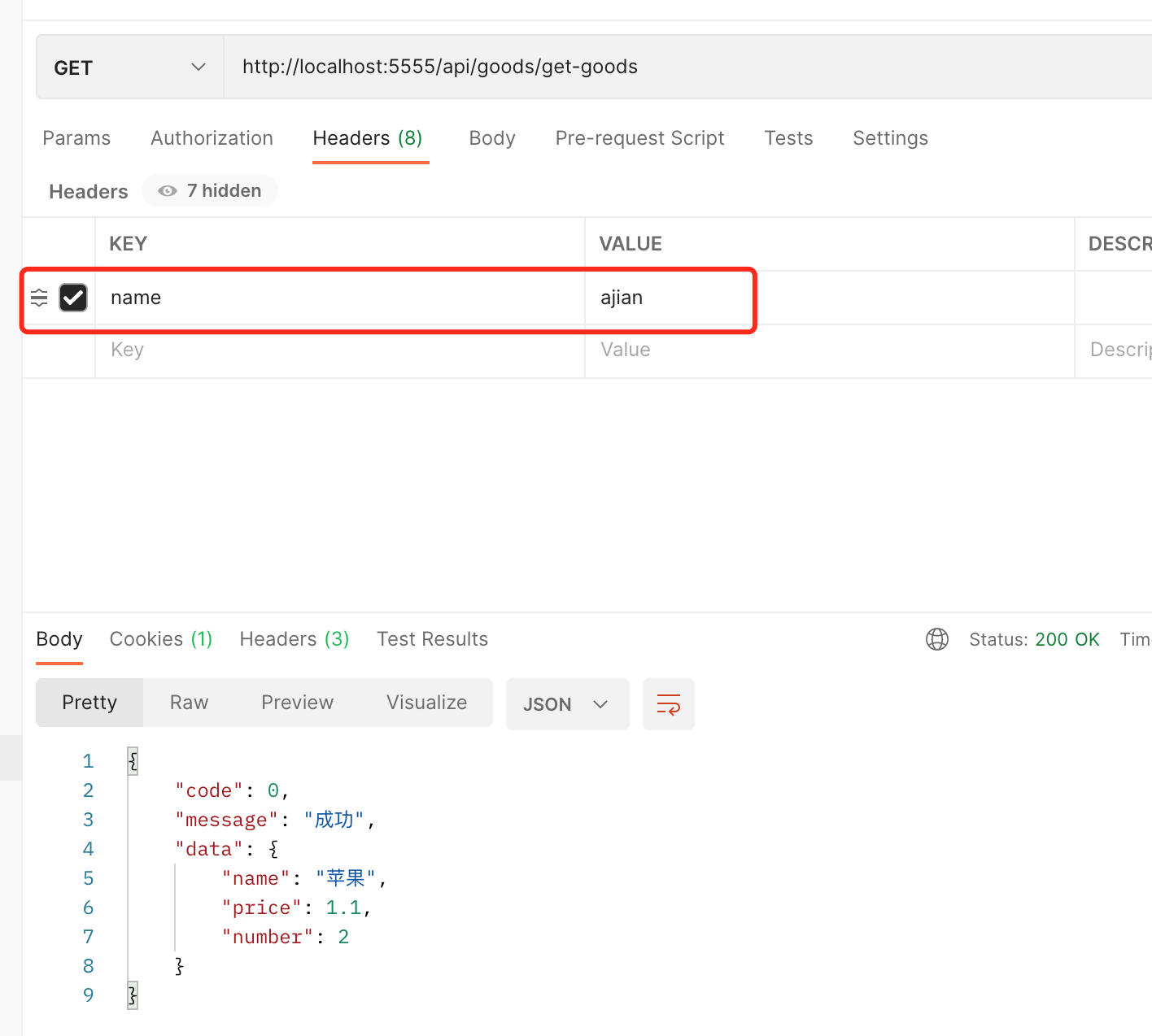
自定义过滤器
自定义过滤器的方式与自定义断言工厂的方式大致相同,所以过滤器继承于AbstractGatewayFilterFactory或者AbstractNameValueGatewayFilterFactory, 命名规则为XxxGatewayFilterFactory
比如内置的添加请求头过滤器
public class AddRequestHeaderGatewayFilterFactory
extends AbstractNameValueGatewayFilterFactory {
@Override
public GatewayFilter apply(NameValueConfig config) {
return new GatewayFilter() {
@Override
public Mono<Void> filter(ServerWebExchange exchange,
GatewayFilterChain chain) {
// 获取到需要添加的header value
String value = ServerWebExchangeUtils.expand(exchange, config.getValue());
// 将header添加到request中
ServerHttpRequest request = exchange.getRequest().mutate()
.header(config.getName(), value).build();
// 重新构建出一个exchange
return chain.filter(exchange.mutate().request(request).build());
}
@Override
public String toString() {
return filterToStringCreator(AddRequestHeaderGatewayFilterFactory.this)
.append(config.getName(), config.getValue()).toString();
}
};
}
}
全局过滤器
以上内容都是针对于每一个router,Spring Cloud Gateway提供了一个针对所有router的全局过滤器
实现方式如下
package com.my.micro.service.gateway.filter;
import lombok.extern.slf4j.Slf4j;
import org.springframework.cloud.gateway.filter.GatewayFilterChain;
import org.springframework.cloud.gateway.filter.GlobalFilter;
import org.springframework.stereotype.Component;
import org.springframework.web.server.ServerWebExchange;
import reactor.core.publisher.Mono;
/**
* @author Zijian Liao
* @since 1.0.0
*/
@Slf4j
@Component
public class MyGlobalFilter implements GlobalFilter {
@Override
public Mono<Void> filter(ServerWebExchange exchange, GatewayFilterChain chain) {
String path = exchange.getRequest().getURI().getPath();
log.info("进入全局过滤器,请求路径为:{}", path);
// 编写任何你想要实现的逻辑,比如权限校验
return chain.filter(exchange);
}
}
测试

自定义异常处理器
小伙伴应该发现了,在遇到错误时,Spring Cloud Gateway返回给客户端的异常并不优雅,所以我们需要自定义异常处理
编写自定义异常处理器
package com.my.micro.service.gateway.exception;
import com.my.micro.service.gateway.result.BaseResult;
import lombok.extern.slf4j.Slf4j;
import org.springframework.boot.autoconfigure.web.ErrorProperties;
import org.springframework.boot.autoconfigure.web.ResourceProperties;
import org.springframework.boot.autoconfigure.web.reactive.error.DefaultErrorWebExceptionHandler;
import org.springframework.boot.web.reactive.error.ErrorAttributes;
import org.springframework.context.ApplicationContext;
import org.springframework.http.HttpStatus;
import org.springframework.http.MediaType;
import org.springframework.lang.NonNull;
import org.springframework.web.reactive.function.BodyInserters;
import org.springframework.web.reactive.function.server.RequestPredicates;
import org.springframework.web.reactive.function.server.RouterFunction;
import org.springframework.web.reactive.function.server.RouterFunctions;
import org.springframework.web.reactive.function.server.ServerRequest;
import org.springframework.web.reactive.function.server.ServerResponse;
import reactor.core.publisher.Mono;
/**
* @author Zijian Liao
*/
@Slf4j
public class JsonExceptionHandler extends DefaultErrorWebExceptionHandler {
/**
* Create a new {@code DefaultErrorWebExceptionHandler} instance.
*
* @param errorAttributes the error attributes
* @param resourceProperties the resources configuration properties
* @param errorProperties the error configuration properties
* @param applicationContext the current application context
*/
public JsonExceptionHandler(ErrorAttributes errorAttributes, ResourceProperties resourceProperties,
ErrorProperties errorProperties, ApplicationContext applicationContext) {
super(errorAttributes, resourceProperties, errorProperties, applicationContext);
}
@Override
protected RouterFunction<ServerResponse> getRoutingFunction(ErrorAttributes errorAttributes) {
return RouterFunctions.route(RequestPredicates.all(), this::renderErrorResponse);
}
@NonNull
@Override
protected Mono<ServerResponse> renderErrorResponse(ServerRequest request) {
Throwable throwable = getError(request);
return ServerResponse.status(HttpStatus.OK)
.contentType(MediaType.APPLICATION_JSON)
.body(BodyInserters.fromValue(this.handleError(throwable)));
}
private BaseResult<Void> handleError(Throwable throwable){
return BaseResult.failure(throwable.getMessage());
}
}
BaseResult
package com.my.micro.service.gateway.result;
import lombok.Data;
/**
* @author Zijian Liao
* @since 1.0.0
*/
@Data
public class BaseResult<T> {
private Integer code;
private String message;
public BaseResult(Integer code, String message){
this.code = code;
this.message = message;
}
public static <T> BaseResult<T> failure(String message){
return new BaseResult<>(-1, message);
}
}
编写配置类
package com.my.micro.service.gateway.exception;
import org.springframework.beans.factory.ObjectProvider;
import org.springframework.boot.autoconfigure.web.ResourceProperties;
import org.springframework.boot.autoconfigure.web.ServerProperties;
import org.springframework.boot.autoconfigure.web.reactive.error.DefaultErrorWebExceptionHandler;
import org.springframework.boot.web.reactive.error.ErrorAttributes;
import org.springframework.boot.web.reactive.error.ErrorWebExceptionHandler;
import org.springframework.context.ApplicationContext;
import org.springframework.context.annotation.Bean;
import org.springframework.context.annotation.Configuration;
import org.springframework.context.annotation.Primary;
import org.springframework.core.Ordered;
import org.springframework.core.annotation.Order;
import org.springframework.http.codec.ServerCodecConfigurer;
import org.springframework.web.reactive.result.view.ViewResolver;
import java.util.stream.Collectors;
/**
* @author Zijian Liao
* @since 1.0.0
*/
@Configuration
public class ExceptionConfiguration {
@Primary
@Bean
@Order(Ordered.HIGHEST_PRECEDENCE)
public ErrorWebExceptionHandler errorWebExceptionHandler(ErrorAttributes errorAttributes, ServerProperties serverProperties, ResourceProperties resourceProperties,
ObjectProvider<ViewResolver> viewResolversProvider, ServerCodecConfigurer serverCodecConfigurer,
ApplicationContext applicationContext) {
DefaultErrorWebExceptionHandler exceptionHandler = new JsonExceptionHandler(errorAttributes,
resourceProperties, serverProperties.getError(), applicationContext);
exceptionHandler.setViewResolvers(viewResolversProvider.orderedStream().collect(Collectors.toList()));
exceptionHandler.setMessageWriters(serverCodecConfigurer.getWriters());
exceptionHandler.setMessageReaders(serverCodecConfigurer.getReaders());
return exceptionHandler;
}
}
测试

小结
本编介绍了关于微服务架构中——客户端如何访问的解决方案:Spring Cloud Gateway
其中介绍了Gateway的三个核心概念:Route,Predicate,Filter。并演示了如何配置及使用他们,还讲解了如何自定义Predicate和Filter。
最后介绍了Spring Cloud Gateway的全局过滤器,以及如何实现自定义异常处理。
以上
希望大家有所收获,我们下期再见~
